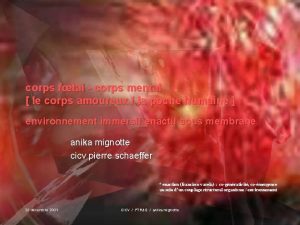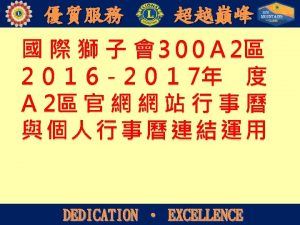CORPS EXCELLENCE AND OPPORTUNITIES 3 Corps Excellence Our



- Slides: 3

CORPS EXCELLENCE AND OPPORTUNITIES 3. Corps Excellence. Our AFJROTC program at Northwest strives to develop model citizens, while in or after school, as well as upon graduation. This is why our cadets are looked to as students who set and model the standards of excellence, not only in academics, but in attendance, graduation and lower discipline referrals. 3. 1. Core Values. The foundation of the AF JROTC lies in the core values of the Air Force. These values serve as cornerstones for our structure and our performance. The USAF Core Values are: Integrity First, Service Before Self, and Excellence in All We Do. 3. 1. 1. The mission of the AFJROTC is to develop citizens of character dedicated to serving their nation and community. 3. 1. 2. The mission of NC-20066 is to build future citizens of character by emphasizing the value of education and leadership while applying the principles of self-discipline, self-sacrifice and teamwork. 3. 1. 3. The Air Force JROTC Code of Honor is “I will attempt to live my life by the highest moral standards, specifically, I will not lie, cheat or steal, nor tolerate those who do. ” All cadets are expected to be able to recite this code, since it is one of the first requirements for promotion to C/Airman. 3. 2. Military Bearing and Conduct. The JROTC program is a military environment. Therefore, cadets will follow military customs and courtesies. 3. 2. 1. All students enrolled in the classroom will be called “Cadets”. For example when addressing another student, you would say “Cadet Smith” or “Cadet Brown”. The SASI and the ASI will be addressed as “sir” or “ma’am” or by their proper rank, “Colonel Martin” or “Sergeant Smith”. 3. 2. 2. When outside in uniform, the military courtesy is to salute an officer. Therefore, cadets will salute the SASI, and other officer cadets. 3. 2. 3. When in uniform, cadets will not engage in public displays of affection, known as PDA. This includes hand-holding, hugging and kissing. 3. 2. 4. Prior to entering the instructor’s office, all cadets will report in. First knock on the door. Once you are acknowledged by an instructor to enter the office, go to the instructor’s desk whom you wish to speak to. Salute and state ‘Sir/ma’am, Cadet _______ wishes to speak to you’. After the instructor returns the salute, then proceed with your questions or comments. Once the conversation is ended, be sure to report out by again saluting the instructor so that you can be dismissed.

3. 3. Recruitment Program. In recruiting and retention of cadets, cadet leaders must be involved in promoting the JROTC program – simply stated: cadets who help recruit and retain cadets are the foundation of a viable unit. 3. 4. Drill Teams, Color Guards and Saber Teams. Any cadet may participate in the drill team, color guard or saber teams. Practices are normally on Tuesday and Thursday from 2: 30 – 4: 00 pm. 3. 4. 1. The Drill Team consists of armed and unarmed drill. The Drill Team primarily competes at in-state and out-of-state drill competitions, and may perform at school and community events. The Drill Team is open to all cadets in the JROTC program. 3. 4. 2. The Color Guard consists of flag bearers and guards. The Color Guard primarily performs at school and community events, such as presentation of colors and parades, and will compete at in-state and out-of-state competitions. To be a member of the Color Guard, a cadet must demonstrate proficiency in armed drill movements. 3. 4. 3. The Saber Team consists of the commander and bearers. The Saber Team primarily performs at school and community events, such as school senior nights, graduations and parades. To be a member of the Saber Team, a cadet must demonstrate proficiency in saber movements. 3. 5. Reserve Cadet Program. The purpose of the Reserve Cadet Program is to enhance visibility within the school and to encourage year-round extracurricular activity participation for those students who wish to be involved the entire school year. Cadets must have completed at least one semester of the JROTC program to be considered for the Reserve Cadet Program. 3. 5. 1. Cadet s who are enrolled in a JROTC academic class may elect to be on reserve status for the alternate semester when they are not enrolled in an academic class. A Reserve Cadet Contract will be signed by each reserve cadet. 3. 5. 2 Cadets on reserve status agree to wear their JROTC uniform every week on required uniform days and/or to participate in at least two extra-curricular activities and/or be actively involved in the drill team or color guard. 3. 5. 3 For agreeing to meet the obligations in paragraph 3. 6. 2, reserve cadets will be allowed to attend semester Field Day, other field trips, and may be promoted one grade. . 3. 5. 4. If Reserve Cadets failure to comply with program requirements, cadets may be removed from reserve status by the SASI/ASI.

3. 6. Summer Leadership School. Cadets have an opportunity to attend a 5 - to 6 day summer leadership school if they meet the following requirements: scheduled to return to the JROTC program the following school year; passed the current JROTC class with a 80% or higher, demonstrated leadership potential and are either a rising Sophomore, Junior or Senior. 3. 6. 1 Announcements about summer leadership schools begin around February. If a cadet is interested in attending leadership school, it is important they notify the SASI/ASI. 3. 6. 2. The Cadet Operations Commander is responsible to assist in leadership school preparation. This may include training cadets prior to the school, recommending cadets and cadre for leadership school, etc. The SASI has final approval on who, how many and which leadership school cadets will attend. 3. 7. Scholarship Opportunities. Air Force minimum standards are published by AFOATS/DOJO each year. It is recommended to start the AFROTC scholarship process in April of your Junior year. The selection process is very competitive and selective. There will be no waiver from these standards. For more information on the scholarship program and selection process for any military branch of service, ask your SASI/ASI. 3. 8. Health and Wellness Program. Fridays are designated for health and wellness. The Cadet Physical Fitness NCO for each flight will plan and lead exercises, as well as document and assess the fitness results for cadets within their flight. The Health Wellness Continuity Book has a lesson plan which should be used by the Cadet Physical Fitness NCO. This includes a Safety Briefing and Wellness exercises and activities. 3. 8. 1 At the beginning of each semester, a fitness baseline assessment will be conducted following the Presidential Fitness guidelines maintained in WINGS. It is the responsibility of the Physical Fitness NCO to conduct the Presidential Fitness Tests, enter the results into WINGS, and provide the results to the cadets within their flight. The instructors will oversee entries made into WINGS. 3. 8. 2. Thirty days prior to the end of each semester, a final fitness assessment will be completed. As in the baseline, the Cadet Physical Fitness NCO is responsible to conduct, assess and document the results. The goal is for each cadet to show an improvement in their overall fitness assessment. 3. 8. 3. The overall health and safety of all the cadets is very important. Therefore, all cadets must have a Cadet Health/Wellness Program Participation Consent Form on file, which will be reviewed by the SASI/ASI as well as by the school nurse prior to a cadet’s participation in the Health and Wellness program.





